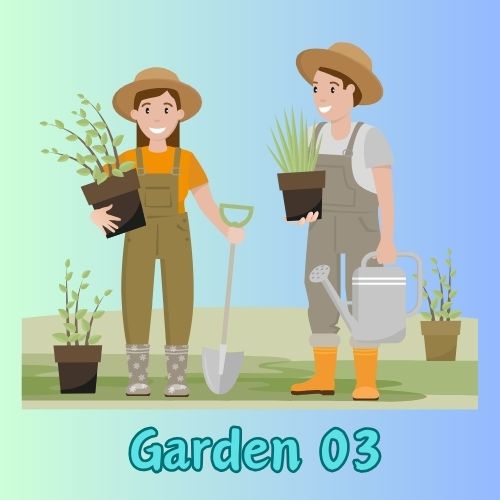Composting is a rewarding and sustainable practice that turns food scraps, yard waste, and organic material into nutrient-rich soil. But once you’ve completed the composting process, knowing how to store compost properly is essential to ensure its quality and effectiveness in your garden. This guide will walk you through the importance of storing compost, different storage methods, and how to maintain its nutritional value until you’re ready to use it.
Why Storing Compost is Important
Before diving into the best practices for storing compost, let’s first understand why proper storage is crucial.
- Preserving Nutrients: Compost is full of beneficial nutrients like nitrogen, phosphorus, and potassium. Improper storage can lead to nutrient loss, rendering your compost less effective for plants.
- Avoiding Contamination: Compost that’s left exposed to the elements can become contaminated by pests, weed seeds, and pathogens, which can harm your plants.
- Preventing Overheating or Drying Out: If compost is stored in an environment that’s too hot or too dry, it can lose moisture and microbial activity, reducing its effectiveness as a soil conditioner.
- Convenience: Proper storage makes it easy to access and use your compost whenever your garden needs it, ensuring you have high-quality organic material at your disposal.
How to Store Compost: Key Considerations

There are several factors to consider when storing compost:
- Storage Location: Where you store your compost plays a significant role in maintaining its quality. Ideally, it should be kept in a cool, dry place.
- Type of Storage: The container or method used for storage affects how long your compost remains viable. You’ll want something that keeps out pests while maintaining the moisture and airflow necessary for compost.
- Duration of Storage: Compost can be stored for long periods if done correctly, but you should aim to use it within six to twelve months to ensure maximum nutrient content.
- Moisture and Aeration: Compost needs some level of moisture and aeration even when it’s finished. If the compost becomes too dry, microbial activity will stop. If it gets too wet, it may become waterlogged and smelly.
Now, let’s explore the best methods for storing compost based on these considerations.
Short-Term Compost Storage Options
If you’re only looking to store compost for a few weeks or months before using it in your garden, short-term storage methods should be sufficient. These options ensure that your compost remains in optimal condition without needing extensive measures.
1. Storing in a Compost Bin
A compost bin is an ideal short-term storage solution for garden compost. These bins are designed to maintain the right balance of moisture, temperature, and airflow, keeping your compost in good condition.
- Choosing the Right Bin: When selecting a bin, look for one that has ventilation holes for airflow but also offers protection from pests. Plastic and wooden compost bins are both viable options.
- Location: Keep the bin in a shaded area to prevent the compost from drying out or overheating, which can degrade the material.
- Maintenance: If the compost is moist enough, you won’t need to add water, but check periodically to ensure the pile hasn’t dried out.
2. Use of Tarp or Plastic Sheeting
If you have an open compost pile that you don’t want to transfer to a bin, covering the pile with a tarp or plastic sheeting can protect it from the elements. This method helps maintain moisture levels and prevents the compost from becoming waterlogged due to rain.
- Advantages: This is a simple and inexpensive way to protect your compost, especially if you don’t have a lot of space or materials for other storage solutions.
- Disadvantages: Tarp covers may limit airflow, so it’s important to lift the cover periodically to check the moisture and stir the compost to promote aeration.
3. Storing in Bags
Another method of short-term compost storage is to place your finished compost into heavy-duty garden bags or sacks. Bags are particularly useful for smaller quantities of compost and allow you to move them around easily.
- Best Bags to Use: Use breathable bags made of natural fibers or burlap, as they allow for some airflow. Plastic bags can also work, but you’ll need to poke a few holes to prevent the compost from becoming anaerobic.
- Storage Location: Keep the bags in a shaded or cool place, like a garage or shed, to avoid temperature fluctuations that could dry out or overheat the compost.
4. Storing Compost in Containers or Buckets
For smaller quantities of compost, such as what’s generated from a small indoor composter or kitchen scraps, storing it in containers or buckets can be a good option.
- Choose Airtight Containers: If you plan to store compost in an airtight container or bucket, ensure the compost is relatively dry, as too much moisture can cause it to go anaerobic and smell.
- Location: Keep containers in a cool, dry place to prolong the compost’s lifespan.
Long-Term Compost Storage Options
If you’ve accumulated a large amount of compost that you won’t use right away, long-term storage methods are essential. These options will help you maintain the quality of your compost for several months to a year or longer.
1. Storing Compost in a Large Bin
For long-term storage, larger compost bins or dedicated storage containers are ideal. These bins can hold larger amounts of compost and provide the necessary aeration and moisture retention to keep the compost in good condition.
- Choose a Sturdy Bin: A large, well-ventilated bin with a tight-fitting lid will protect the compost from pests and prevent moisture from evaporating too quickly.
- Compost Maintenance: For long-term storage, periodically check the moisture content and aerate the compost by turning it over to prevent compaction and keep the microorganisms alive.
- Avoid Overheating: Place the bin in a shaded, cool spot to prevent excessive heat buildup.
2. Using Raised Garden Beds for Storage
A creative method for long-term compost storage is using raised garden beds. If you have beds that aren’t in use during the off-season, fill them with finished compost. This allows you to store the compost until you’re ready to plant, and the compost continues to break down and enrich the soil during storage.
- Layering: When using a raised bed, consider layering the compost with straw or mulch. This helps to retain moisture and provides some aeration.
- Advantages: This method allows you to keep compost within easy reach of your garden, and you won’t need to move it once it’s time to plant.
3. Compost Bays
Building compost bays out of wood, bricks, or other materials allows for long-term compost storage. Bays are similar to compost bins but larger, and they are excellent for gardeners with high composting output.
- Aeration and Moisture: Bays allow for plenty of airflow, and you can cover them with a tarp to protect from heavy rain.
- Turning the Compost: For long-term storage, turning the compost occasionally will ensure that it doesn’t compact, allowing air to flow through the pile.
4. Underground Storage (Compost Pit)
For a more low-maintenance option, consider burying your finished compost in a compost pit. Digging a shallow trench and covering it with soil can effectively store compost for several months. This method allows the compost to break down even further while staying protected from the elements.
- Avoid Waterlogging: Choose a location with good drainage to avoid waterlogging.
- Benefits: Compost stored in a pit can continue to decompose while remaining shielded from pests and the weather.
How to Maintain Stored Compost
Once you’ve chosen your preferred method of storage, the next step is to ensure that your compost remains in prime condition.
1. Monitor Moisture Levels
The most important aspect of storing compost is maintaining the correct moisture level. If compost becomes too dry, microbial activity will cease. On the other hand, if it’s too wet, the compost may start to smell or go anaerobic.
- Checking Moisture: The compost should feel like a wrung-out sponge—moist but not soggy. If it’s too dry, sprinkle some water on it. If it’s too wet, leave the lid off or add dry material like straw or shredded newspaper.
2. Turn the Compost Regularly
Even when storing compost, occasional turning or aeration is beneficial. Turning the compost will keep it oxygenated, preventing it from becoming compacted and promoting the continued activity of beneficial microbes.
- Frequency: Turn the compost every couple of weeks for long-term storage to keep it fresh and full of nutrients.
3. Keep Pests Away
One of the most significant challenges of storing compost, especially outdoors, is keeping pests at bay. Rodents, insects, and other wildlife may be attracted to your compost pile or bin.
- Sealed Containers: Ensure your bins or containers have tight-fitting lids to prevent unwanted critters from getting into the compost.
- Bury Food Scraps: If you’re storing compost that includes food waste, bury it beneath a layer of leaves or soil to mask the smell and reduce the risk of attracting pests.
The Best Time to Use Stored Compost
Using compost at the right time can make a huge difference in the health of your plants. Whether you’re storing compost for a short period or throughout the off-season, understanding when and how to apply it is crucial.
1. Before Planting Season
The best time to use your compost is typically in early spring, right before planting season begins. Spread a generous layer of compost over your garden beds to enrich the soil. You can also dig it into the soil to improve its structure and provide nutrients for your upcoming plants.
- Tip: Compost can also be used in fall before winterizing your garden. Adding a layer of compost helps protect the soil during the colder months and keeps it nutrient-rich for the next growing season.
2. As a Soil Amendment
Compost can also be used throughout the growing season as a soil amendment or mulch. If your plants need an extra nutrient boost, simply spread compost around the base of the plants. This practice helps retain moisture, suppress weeds, and add nutrients back into the soil.
3. As a Potting Mix
Stored compost can also be mixed with other materials to create a nutrient-rich potting mix. Combine compost with sand, perlite, or peat moss to create a well-draining, nutritious medium for potted plants, seedlings, and container gardens.
4. For Lawn Care
Compost can also be applied to lawns to improve soil structure and encourage healthy grass growth. Simply spread a thin layer over your lawn in spring or fall and rake it in. The compost will improve soil aeration and water retention, giving you a lush, green lawn.
Conclusion
Learning how to store compost properly can ensure that your compost remains nutrient-rich and ready for use when you need it. Whether you’re storing compost short-term or long-term, the key is maintaining the right balance of moisture, aeration, and protection from pests.





